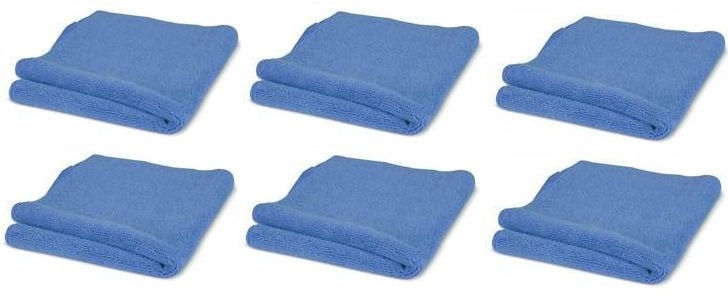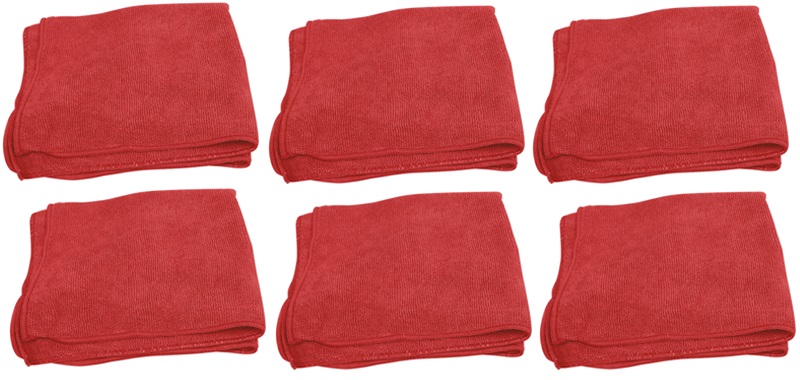 Keeping your vehicle or boat clean and polished is a task in itself. Knowing how to achieve the finish you want is the challenge faced by many. Here are a few things well worth knowing before you begin.
Keeping your vehicle or boat clean and polished is a task in itself. Knowing how to achieve the finish you want is the challenge faced by many. Here are a few things well worth knowing before you begin.
Know your buffing and polishing products and be aware of their capabilities. Work with products that you are familiar with, understanding the buffing process, the buffing pads and the compounds and know exactly how each performs.
The type of pad you use will make a difference in the overall appearance of the paint. There are various reasons for this.
- The aggressiveness of the compound or polish you are working with.
- The choice of buffing pad based on the product you are using,
Understand the type of paint, and what you need to accomplish in the particular buffing step you are performing. 
Become familiar with your buffing products and know what they can and cannot do in regards to paint correction. Realise that not every paint system will react the same way when buffing.
Differences in Paints
Most of the cars you’ll working on have a basecoat / clear coat paint system. You’ll be buffing the clear coat portion of the paint. Various clear coats react differently when buffed, even when your choice of product and buffing pad remains the same. This is known as cross link density. The denser the clear coat, the harder it is. The less dense, the softer the clear coat.
- When buffing a softer clear, it’s easier to remove scratches and blemishes, but you may leave behind deeper swirl marks and more of a haze or cloudiness in the surface. There is also the danger of burning the paint on a softer clear coat. This type of clear needs a less aggressive compound and buffing pad.
- A harder clear coat will pose more difficulty in removing scratches and blemishes. This type of clear coat will need a more aggressive compound and buffing pad.
It’s likely you’ll require a variety of buffing pads to produce a perfect finish on each and every vehicle.
Hand or machine buffing?
Using some type of buffer and buffing pad for optimum results is definitely the way forward. The days of getting a flawless finish doing everything by hand are over. Applying a product by hand is an inefficient way to operate as it wastes time and product, and will never produce the desired results that a buffer and pad will.
Buffing pad Types
There are generally 2 groups of buffing pads. Within each group are a number of choices.
- The first group are Wool pads with a wide variety of wool pads to choose from. These pads are used to perform heavy cutting or compounding, light cutting, polishing and finishing. The pad may be made of 100% wool, a blend of wool and synthetic, or natural lamb’s wool.
- The second group of pads are foam pads. Their capabilities range from cutting, to polishing, and finishing. The aggressiveness of foam pads are judged by way of grading. Foam pads are graded in PPI or Pores per square Inch. Most range between 40-100 PPI, with higher grades or PPI meaning a softer pad. The more cells per inch, the higher the PPI rating. The less cells the lower the PPI rating and more aggressive the pad.
The density and compression of a pad is important to understand as well. With many types of foam densities available, the combination of pad density, compression and PPI will determine the aggressiveness of the foam pad. Don’t judge pad aggressiveness purely by its colour. Different companies may use similar coloured pads with the aggressiveness being totally different for each. A very aggressive pad would typically have a PPI rating of 40 or 50 and would have a fairly dense in feel. Light cut pads would be a 60-80 PPI and have a softer feel but still appear somewhat dense. Finishing pads are closer to 100 PPI and feel very soft.
Cleaning of wool and foam pads
Keeping your buffing pads clean is important for consistent, smooth buffing to produce quality finishes.
- Wool pads with residue compound should be left to fully dry using a “spur” tool to clean them.
- To clean a foam pad, frequently spin the pad while on the buffer and use a nylon bristle toothbrush or brush to remove excess product. DO NOT use a spur, screwdriver or the edge of a countertop, etc to clean a foam pad. This will damage the pad beyond use. It is not recommended to wash foam pads in hot water then drying them in a clothes dryer. Heat will delaminate the glue that adheres the Velcro to the back of the pad causing the Velcro to separate from the pad.
Understanding the capability of each pad
Having a good knowledge of the descriptions and characteristics of both wool and foam pads will help you to understand the abilities of each type of pad in the buffing process.
- Aggressive pads are designed to “shave” the paint of its imperfections, while still being able to produce a reasonable gloss.
- The lighter cut and polishing pads are designed to finely buff and shine the paint surface to give it a brilliant finish.
- Aggressive pads can damage your paint, mouldings or other sensitive trimming if care is not taken.
- Finishing pads won’t pose a serious threat of damaging paint and mouldings.
Finishing pads should not be used for compounding; the same as compounding pads should not be used for finishing.
- Using a single type of pad for all your buffing purposes usually won’t attain the result you require.
There are some instances you can overlap pad and product uses.
- You can often make the buffing products you have be more or less aggressive by varying your buffing pad, speed and pressure exerted on the buffing machine.
- By understanding the capabilities of the products you can adjust what they can do by changing pads.
- Your compound needs to work with your most aggressive pad to remove the harshest imperfections.
- For most applications you can use an aggressive foam pad with a compound and it will remove most scratches and blemishes.
- If I want the compound to perform a bit less aggressively, you simply use a medium foam pad (60PPI with medium density). This limits the overall aggressiveness of the compound.
- The speed and pressure exerted on the buffer also comes into play. At 1500 RPM and more pressure, you will be more aggressive than at 1000 RPM and little pressure.
- Using the polish you can achieve the same thing. You can have more aggressiveness by using the 60PPI, medium dense pad and slightly more speed and pressure, being slightly more aggressive to remove deep swirl marks. Alternatively you can use a 90 or 100 PPI pad that is very soft with less speed and pressure and be less aggressive, as in final polishing.
Regardless of the style of pad you choose to buff with, it’s imperative that you understand what the pads capabilities are. Familiarise yourself with each and every pad and buffing product you use and with this you’ll be well on your way to producing a brilliant looking vehicle.












